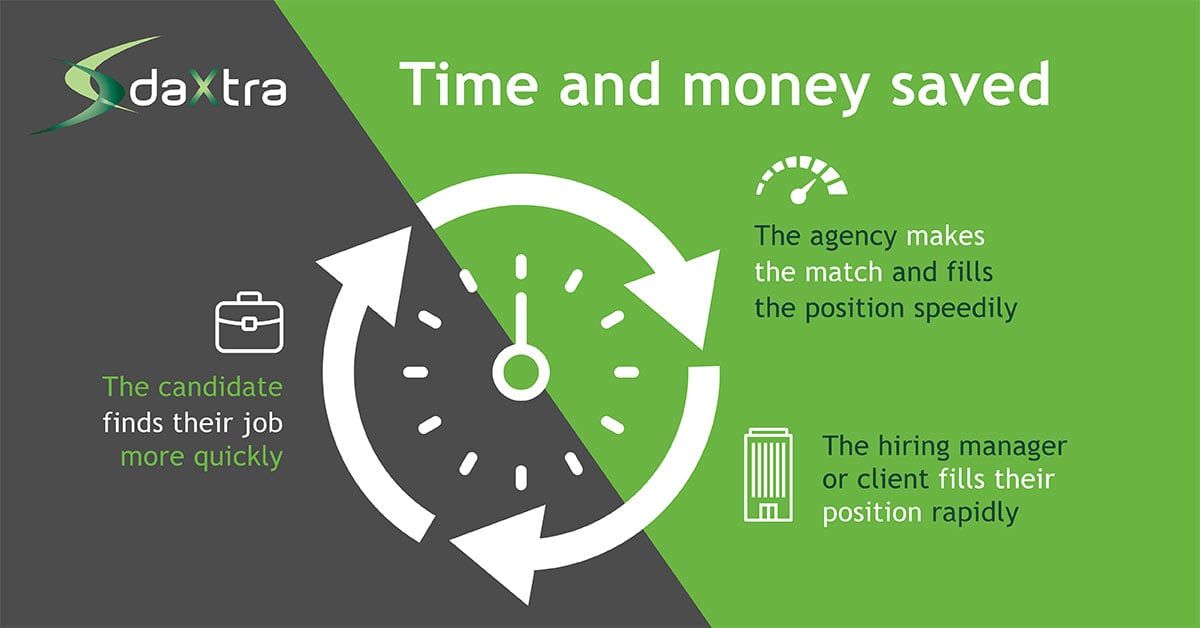By M. Christine Watson, Marketing Director, DaXtra Technologies
In the staffing and recruiting realm more talk of automation in the form of artificial intelligence and natural language processing is spilling into the discussions heading into 2020. These conversations have taken a few twists and turns in the last couple of years. Talk of robots taking over has spooked many, while others welcome the thought of lowered overhead. In 2020, the discussion on the lips of many contains a new catchphrase: Human in Control (HIC) Automation.
The general misconception when it comes to AI and automation is that entire workflow processes will be automated, leaving humans out of the picture. That couldn’t be further from the truth, especially when it comes to staffing and recruiting, where human interaction is paramount. Relationships play such a key role in recruiting and let’s face it, robots haven’t quite mastered that yet. Artificial intelligence doesn’t mean 100% automation. “In the end, it comes down to the right balance between human control and the autonomy of an intelligent system,” says Vladimir Shapiro, a UX design expert at SAP.
In the “History and Future of Human-Automation Interaction,” the International Journal of Human-Computer Studies notes that over the last 50 years, automation research has covered a lot of ground. But the one area that stands out is the research that’s been done on completion of time-sensitive tasks.
No one knows better than folks in the recruiting and staffing industry, how much money is saved when you shorten time to hire. Working menial tasks into an automated process is very beneficial to the recruiter. The automation behind data capture, parsing, searching, matching and aggregation is specifically built to save time while finding the best candidates for the right jobs. These are tools that should be embraced by every business in the recruiting and staffing industry.
The advancement of HIC Automation dramatically improves the entire hiring process when it comes to completing time-saving tasks. Shortening time to hire is beneficial to all concerned. The candidate finds their job more quickly and, in some cases, unemployment time is reduced. The hiring manager or client fills their position rapidly. And, if an agency is used, they make the match and fill the position speedily, satisfying both client and candidate. All of this involves less time and money being wasted in a long, drawn out hiring process.

Today’s automated recruiting tasks don’t require the user to know how the automation process works. The automation happens so that someone without detailed technical skills can operate the system successfully, without undergoing extensive training.
In an article in Design News, Matt Fleckenstein mentions, “With intelligent process automation, we are seeing rote manual tasks being replaced, and for tasks that require human intelligence, creativity, strategic thinking, or decision-making, humans are normally still making the decisions, but with the support of computers.” He nailed it. He goes on to discuss essential capabilities that improve business process automation by addressing workflow, forms, and mobile apps. This perfectly describes some of the recruitment automation solutions and tech stacks out there, like DaXtra Capture (recruitment workflow automation), Apply & Match (auto-populating application forms), Herefish, Sense and TextUs (mobile engagement and texting apps).
Fleckenstein goes on to say, “People are irreplaceable even in the age of artificial intelligence, offering nuanced skills that AI and machine learning don't have the capability to replace.” Recruitment automation is heavily dependent upon humans to set parameters for things like automated candidate searches, while the robotics of the automation work on the menial tasks. Humans can then do what they do best – work the relationship.
Even within the automation tools themselves there can be evidence of the human touch. At DaXtra, while our products use Natural Language Processing and Machine Learning to identify and stay on top of new skills, job titles, industries and keywords, our team of human linguists still research and verify whether they are relevant to a specific taxonomy. Chris Wirt, DaXtra Americas Sales Director East, compares HIC automation to something everyone can relate to: self-driving cars. “Think of it as a Tesla in self-driving mode… It’s nice, but you have to keep a finger on the steering wheel just in case something happens that’s out of the computer’s control.”
Presently around 85 percent of organizations are using automated technologies like automated recruiting software. This number will only continue to grow. If you don’t currently have automated tasks implemented, you should plan to focus on this area as you move into 2020, in order to stay competitive in the recruiting industry.
The automated features of recruitment technology like resume parsing software, job matching software, CV analysis software, job board software, applicant tracking software, resume database management software and so forth should be viewed as tools that will improve your day-to-day work processes. With more data moving through resume parsers and becoming available to recruiters, the information leading to human decision-making around hiring will improve. Machine learning can complement and supplement our own knowledge.
Finally, a word of caution on recruitment automation: keep your focus on the candidate. By automating recruiting processes, the competitive edge is yours for the taking, as long as you concentrate on meeting the needs of your candidates — your real bread and butter. Candidate experience can make or break a potential hire and a human-to-human connection is the best barometer for reading your candidates. Find a balance and be smart in how you use automation tools and you’ll keep ahead of the competition.
Other articles of interest:
10 Time-Saving Productivity Tools in DaXtra Search
Recruitment Productivity and Increasing Your ROI



